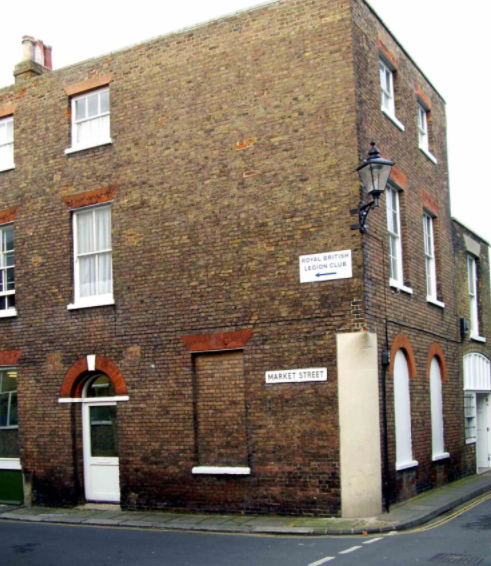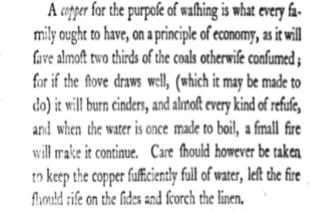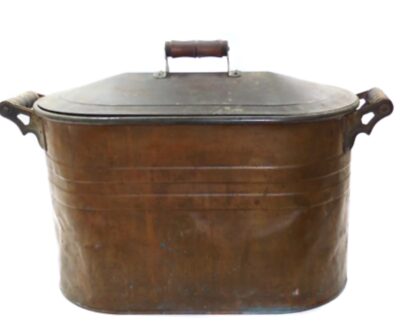Follow us on Facebook @FHofDW
A House In Golden Street
&
The People Who Lived There
Part 1
We were kindly given access to the original deeds and documents of a house in Golden Street. These date back from the present day to 1749. So with the agreement of the current owner that we would not, in our findings, reveal the number of the house, we began our research.
None of these documents tell us exactly when our Golden Street house was built but we assume it was in the early 1700s. It was definitely being leased in 1749 as this is the date of the first document we have had access to and we will come to that document shortly. But let us first look at Golden Street itself.
Golden Street
Golden Street, and those streets surrounding it, were part of the Manor of Chamberlain’s Fee which was made up mainly of two pieces of land known as Shots.
The first, Eastland Shot, lay from today’s Manor Road between Mill Road and Ark Lane and from Mill Road to Wellington Road. The second known as The Gosse was between West Street and High Street and from St George’s Road to Alfred Square. At one time this area was dominated by market gardens. Later they formed the central part of what became known as ‘New’ or ‘Lower’ Deal.
Golden Street, and the streets alongside it, are built on what was then called, ‘ the waste of the manor’.
This was the area from Lower, now High Street, to Beach Street between Oak and Dolphin Streets. Basically this was the beach so originally it was seen as ‘waste’ land and was not built on until the early to mid 1600s when ‘New’ Deal began to expand.
Edward Hasted, in his Topographical Survey of Kent, tells us that Elizabeth 1 gave the land to the Hales family and since then the Hales, Gookin, Verrier, Paramor, Dilnot and finally the May families have all held and therefore, in turn, became Lords of the Manor of Chamberlain’s Fee.
In 1712 Richard Gookin sold the Manor to John Paramor and John Hawker. The first two ‘Indentures’ of our house, dated 1752 and 1753, clearly state that John Paramor and John Hawker leased our house to John Wyborn the Younger on 16th day of October 1749 for the term of twenty one years.
What do the documents tell us?
Well firstly they tell us the names of the people associated with the house. Not just those who lived in or owned the house, but those living next door and also who had financial or business connections with it.
These early documents don’t actually give the name of ‘Golden Street’ and, as was common in many towns of the time, a house number is not given either. So a description of our house’s position in the town is given as ‘lying in Lower Deal’ and abutting to its various neighbours to the East, the North, and to the South. The earliest named mention of Golden Street that we have found is in the Kentish Weekly Post or Canterbury Journal in 1807.
The first three documents are dated 1749, 1752 and 1753 and the names of the men on them are John Wyborn, Thomas Marsh, Stephen Bond, John Middleton, John Smith and Samuel Simmons with neighbours Joseph Kirkalls, Thomas Robinson, John Nicholas, Thomas Munden .
1749
In 1749 when John Wyborn the younger, who we shall just call John Wyborn, wanted to borrow money, banking, as we know it today, was still very much in its infancy. So, with only about twelve banks outside London in 1750, loans were made by men who had ‘surplus capital arising from their trade’ such as brewers and merchants or, like our Thomas Marsh, attorneys. Whether it was Thomas Marsh’s habit to loan money or, if he was somehow acquainted with John Wyborn, we don’t know but we do know that it was on 11th January 1749 that John Wyborn took out a Bond and became “…firmly bound…” to Thomas Marsh for £100 on the condition that he paid back the £50 10s he had actually borrowed by the 12th of April 1749.
So who were the men named in the Bond?
Thomas Marsh, as we already have said, was an attorney. Frustratingly we could find very little information about him. There is no definite baptism, marriage or burial records and he does not appear in the newspapers of the day. We did however find records that show he took on three apprentices. Samuel Simmons in 1740, William Philpott in 1748 and John Apsley in 1755. Then of course there is the Bond of 1749 and two further Indentures dated 1752 and 1753 all of which at least tell us he was “…of Dover…”
John Middleton came from Deal and was born in around 1720. He was also an attorney so it is quite possible that he knew of Thomas Marsh and may even have sent John Wyborn to him. He too took on apprentices. Edward Nairne in 1757 and John Middleton in 1762. As no premium, which was usually around £100, was paid for this John, we assume he was a close relation.
Stephen Bond was a Baker in Dover. He was born in Lynstead in 1716 and married a widow Rebecca Collins nee Elgar in 1744 and with her had six children. He also took on apprentices, John Stuppell in 1748 and John Quested in 1756. Stephen died in 1777 and was buried in St. Marys the Virgin, Dover.
As well as his interest in our Golden Street House Stephen had also lent £300 to John Wyborn for three properties on Middle Street in June 1749. These adjoining properties were near Coppin Street as one is described as being on the corner of these two streets.
As for John Wyborn, he was baptised in either St. Nicholas’ Church in Sholden or Northbourne, St. Augustines in 1716. We assume it was Sholden as he was later buried there in 1752. St. Nicholas’ Church was then a chapel of ease for Northbourne.
We know he was a Victualler as in 1740 he was made a Freeman of the town and in the same year he became the licensee for the Margate Hoy taking over from Katherine Dale who, it is probable, was John’s mother. In April 1748 John leased from John Paramor and John Hawker, several tenements and perches of ground on and around Beach Street. If John borrowed to purchase these leases we don’t know but it was just over a year later, in July 1749, he entered into the Bond with Thomas Marsh and in October purchased the lease on our Golden Street house.
Judging by John’s will, which was written in 1744, he either regularly travelled by sea or was worried about doing so as he said “… considering the perils of the seas and other uncertainties of this transitory life …I do publish and declare this my last will and Testament … ” We also know from his will that his housekeeper was named Mrs Katherine Kirby who was a widow who he was keen to make sure receives her bequest as “… I insist my said brother William to fulfill or also to have no benefit of this my will and give unto my house keeper three pounds for mourning…”
He also leaves money to a Mary Harwood who he describes as a spinster from Dover but who she is we have no idea.
In 1754 William Wyborn, as executor of his brother’s will, began to put John’s estate into order. He put up for sale the properties on Middle Street, one of which John had himself lived in, and for which Stephen Bond had lent him the £300. We assume that the properties on Beach Street were sold off at about the same time.
John it seems was, with our Golden Street House, the three houses in Middle Street and those on Beach, investing heavily in property before his death.
1752
The second document, dated 13th July 1752, is between Thomas Marsh and Stephen Bond. The same Stephen Bond who had witnessed the Bond in 1749 between John Wyborn and Thomas Marsh. This document is an Indenture of Assignment of both the Bond and the lease on our Golden Street house transferring the Bond and lease, in part, to Stephen Bond. This mention of the ‘Assignment of Leasehold’ suggested that an agreement must have been made between Thomas Marsh and John Wyborn, whereby John Wyborn assigned the lease to Thomas Marsh if he forfeited payment. This document though is missing but it is ‘recited’ (written or repeated), in both the 1752 Indenture and the next one dated 1753.
Unpaid Bond
The Indenture states that the “…said Bond or obligation is still unpaid and unsatisfied …” so Stephen agrees to pay Thomas Marsh £50 and to act on Thomas’ behalf to “…ask and demand from and to sue and arrest the said John Wyborn …” to obtain the money owed from the “…rented obligation and for non payment…” In effect they were now joint owners of the leasehold of our house.
As John Wyborn died three months later and was buried in St. Nicholas’ Church, Sholden on 15 October 1752, we don’t know if there was enough money from his estate to repay his debt or if it ever was.
We do know though, from these first two Indentures, that a John Smith was possibly the occupier of our Golden Street house. Both documents say “… in the tenure or occupation of John Smith or of his assigns…”
It seems that John Wyborn leased the house to John Smith to enable him to “…better secure the loan…” or to help pay it off. This lease, like his others, we presume, was to be a long term investment.
John Smith
So John Smith may have been our first known occupier of our house, but who was he? As you may guess, with a name like John Smith, there are several men of that name in the town at this time. That being so we cannot say with any certainty which John Smith lived in our Golden Street property.
The House and Ground
The house itself is described as a Messuage and Tenement with outhouses and ground adjoining it of 5 perches In other words a house with an outhouse and garden, and as with most houses in this now conservation area of Deal, you step directly from the street into the house. In 1911 we know that there were five rooms which included the kitchen. Interestingly we were told that one of the dividing walls was made up of ‘tea chests’ which was possibly an early repair to that wall using what they had to hand.
1753
Then on 7 December 1753 Stephen Bond and Thomas Marsh agreed to sell the lease on our house for £52 /15s, to Samuel Simmons. At this point there were still seventeen years left on the original lease. We are unable to confirm if Samuel ever lived in our house or if he continued to sub-let it to John Smith.
We know that he was apprenticed to Thomas Marsh in 1740.
After completing his apprenticeship Samuel, who was born in Deal in 1725, set up his own practice as an Attorney in Sandwich. He married Catherine Foart in 1749, she sadly died in 1750 while giving birth to their first child, a son Samuel Foart Simmons. In 1751 Samuel re-married to Mary Martin with whom he had four children. He too took on an apprentice in 1762 named John Matson.
Samuel and Mary at some point must have moved to live in Coldred as it is here that they both died and were buried in 1766 and 1767 respectively.
We know from documents concerning the sale of John Wyborn’s estate that Samuel , in 1753, also purchased the properties in Middle Street that were once owned by John Wyborn. He then in 1754 sold these to John May.
The ownership of the lease, on our Golden Street house, following the death of Samuel, passed to Mary as his heir, then to his children as per his will, though our house isn’t specifically mentioned in his will. Leases were often reviewed every seven years so it is probable that the family decided, in 1767, to surrender the lease, at which point it was returned to the Lord of the Manor of Chamberlain’s Fee who by this time it was one, John Dilnot. The ins and outs of how he became Lord of the Manor of Chamberlain’s Fee is made complicated by having so many John’s and Jane in the story.
The receipt for payment was again witnessed by Samuel Roby. As Ann sold these items, we assume that she was vacating the Golden Street House but where she went is a mystery. Ann died in 1795. She was buried in the St George’s Garden of Rest possibly alongside her husband.Samuel Roby and A. M. Roby
Samuel Roby was born in Deal in 1734, the son of Edward and Elizabeth. He married Anna Maria Child in 1756, it is she who witnessed, with her husband, the receipt of £84 when Ann Middleton settled her debt to Peter Atkins in 1770. We don’t know who Samuel was apprenticed to, but in 1764 he took on John Cannon as his own apprentice. Samuel died in Great Mongeham 1777.
Our research continues into the House in Golden Street & the people who lived there. So please visit again or follow us on Facebook where we announce all new research published on our website.













